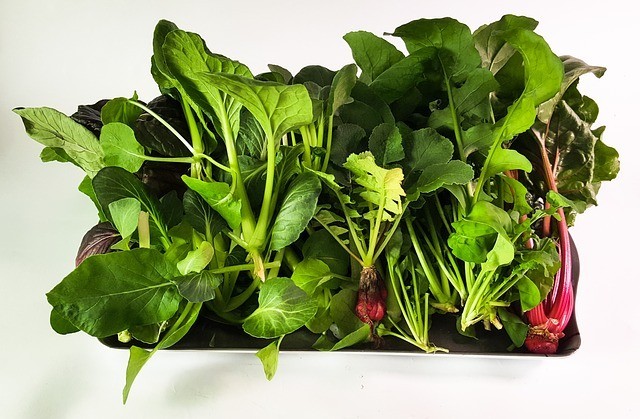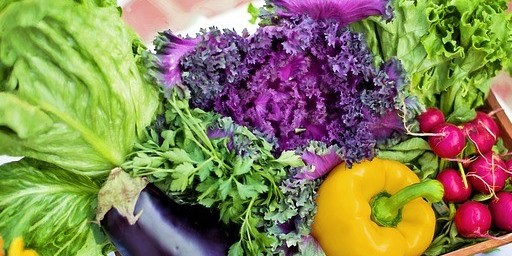
Do you know why vegetable companion planting is so vital for our garden? Here are some tips. Before, Z started gardening she didn’t know what companion planting was, her mother never taught her that. So, she thought. However, by watching her mom she noticed that when planting mustard greens her mother planted cilantro, scallions, and chili peppers altogether.

Growing up she thought it was a normal thing the elders did. The mustard grew really big and there were some but not a lot of insect trails. Of course, there were a few green worms here and there but never missing a whole leaf. She was impressed to see how tasteful the vegetables were.
Now thinking about it her mother taught her a lot of things. She just needed to pay attention to the style of planting and what was planted at the same time.
Who doesn’t want a great-looking vegetable garden? Also, check out my other blog, Starting a garden in Yuma, AZ for those that are interested in starting a garden or just a read.
Okay, listen there is so much information on companion planting. It ranges from Pinterest, Instagram, Twitter, and Facebook. However, I’m going to show you how we, zbestgarden do it when organic gardening by Z. Z is my gardener she knows a lot, maybe, according to her.
What is Companion Planting
According to Z. Companion, planting is growing vegetables like having good friends next door to each other without all the bickering, finger-pointing, and competitions. A well and prosperous community of veggies. Everyone is happy growing and playing with each other throughout their plant lifetime.
Guys and gals this is not only for vegetables but ornamental planting as well. The basic principle is to grow plants together so they can enhance growth, defend, and add flavors. Having a garden of living in harmony. Check out my Where to begin gardening as well.
Why Do We Companion Plant

The reasons are, they grow well with each other. They thrive together, and some will deter other bad insects from going beyond the boundary of, safe. We will talk about that in a little bit. For now why? When we grow our vegetables we would like them to thrive, to look like they are supposed to, green. Well maybe red, orange, fuzzy, and lush, you know what I mean.
Planting vegetables that are not compatible will deprive other vegetables of iron, nitrogen, sulfur, and all the nutrients that some plants needs. That’s the competition I was talking about earlier.
The other non-compatible plants have their own insects that will harm the other plants nearby. If the plants are not compatible with each other they will wilt and die off. Their insects will set out an army of bad insects to guerrilla into the neighboring borders and wipe out the other plants. We are trying to prevent the devastation from happening.
Companion planting will improve the smell, taste, and growth. Yes, we want them happy. When your plants are happy you know that they are safe from harmful insects that will harm them and they can be less stressed out.
Organic Companion Planting According To Z’s Know-how
So here we go. Z loves to grow stuff. Doesn’t matter what it is. Flowers, ornamental plants, vegetables, herbs, and anything that mother nature nurtured. However, we are going to talk about what Z grows the most in her garden.
1. Mustard greens are Z’s favorite because where she lives it’s warm all the time. Mustard grows well there throughout the year. It’s a favorite in Hmong pork soup, yum. I concur.
COMPANIONS
- Mint will deter cabbage worms. No more half-eaten leaves due to little green monsters. Yikes!
- Chives, garlic
- Broccoli
- Carrots
- Dill
- Cabbage
Any vegetables that are in the mustard green family.
2. Cilantro/coriander love this strong aromatic herb. When fresh from the garden the aroma is super strong and the flavor is just busting out of control, yum!
COMPANIONS
- Basil
- cabbage
- Tomatoes
- Leeks/scallions
3. Lemongrass goes well with any soup or minced up in stir-fry dishes.
COMPANIONS
- Thyme
- Lemon verbena
- Marigold
4. Melon
COMPANIONS
- Marigold help stop bad insects, more like parasite worms from starting home on the melon vine.
5. Tomatoes, when Z sees any insects or bugs that have no arms or legs, it’s an all-out body shudder attack. So, to prevent tomato hornworms she planted its companion hoping to deter those things away.
COMPANIONS
- basil
- pepper
- chives
- marigolds add colors to the garden as well.
- borage
Conclusion
Hey, if you have read this far I know you are an expert on companion planting guide. I hope this will help you plan your garden no matter what you plant.
These are Z’s experienced that worked for her in the desert town. Love growing roses plant garlic next to them to lure away aphids, snails, and ants from their pretty petals. Plant green beans next to corn they love to travel north. It also works well with herbs too check it out here on herbs.
Any comments or questions please leave them in my comment section. If you have more to share please let us know. Thank have a wonderful day or night wherever you are. Go take on the day, challenge the unknown.
Planning to grow cilantro and since I have basil growing, perhaps I’ll grow them together. Thanks for this informational post!
That’s a good idea. Companion planting brings out and enhances the flavor of each herb or vegetable. The season for planting cilantro is over for us but if it’s time to grow where you are then give it a try. Doesn’t hurt to experiment in your garden. The best way to garden is through trial and error. And most of all have fun too. Have a great day Sharon. 🙂